| |
| |
 |
|
| |
田润德
编译
文/图 2020-07-03 19:36 |
|
| |
|
|
|
|
| |
 |
|
|
|
| |
谢尔盖·拉赫玛尼诺夫(Sergei Rachmaninof
1873-1943) |
|
|
|
| |
|
|
|
|
| |
丹尼尔·哈利托诺夫演奏拉赫马尼诺夫《帕格尼尼主题的狂想曲》作品43 |
|
|
|
| |
拉赫马尼诺夫,《帕格尼尼主题狂想曲》作品43,
钢琴:丹尼尔·哈利托诺夫(Daniel Kharitonov )指挥:尤尔·莱维(Yoel Levi)韩国交响乐团 KBS Symphony
Orchestra(Fri-PM20:00)2019.6.28.首尔艺术中心音乐厅。 韩国首尔 |
|
|
|
| |
Rachmaninov, Rhapsody on a
Theme of Paganini, Op.43 Рахманинов, Рапсодия на тему Паганини, 라흐마니노프 /
파가니니 주제에 의한 광시곡, 작품 43 Piano : 다니엘 하리토노프 Daniel Kharitonov Conductor :
요엘 레비 Yoel Levi KBS Symphony Orchestra (Fri-PM20:00)28th,Jun,2019.Seoul
Arts Center Concert Hall.Seoul South Korea. |
|
|
|
| |
|
|
|
|
| |
音乐历史上的今天
1934年7月3日,61岁的拉赫玛尼诺夫在一次小手术后来到琉森湖修养,并开始酝酿以帕格尼尼《A小调第24随想曲》中的一个主题写一首狂想曲。之前舒曼和勃拉姆斯对此有过发挥。拉赫玛尼诺夫每天从早晨工作到黄昏,用六个星期完成了这部协奏曲。
帕格尼尼主题狂想曲(Rhapsody on a Theme of
Paganini),单乐章的钢琴与管弦乐团协奏曲,其作者为拉赫马尼诺夫,这也是其最重要的作品之一,创作于1934年,这部作品取材于帕格尼尼的24首小提琴随想曲,利用其中第24首随想曲的音乐主题而创作,整部作品以辉煌的技巧表现作曲家的个人风格,然而作品里最令人难忘的却不是眼花缭乱的技巧,而是:
第18个变奏,整部作品到这突然放慢,奏出一支纯朴抒情的曲调,优美无比,动人心魄,隐含着永不褪色的“俄罗斯忧郁”,这个旋律先在钢琴上唱出,质朴平和,热情逐步增长,发展成浪漫激情的颂歌。
拉赫玛尼诺夫写的这部《帕格尼尼主题狂想曲》也可以称之“帕格尼尼主题变奏”,音乐取材于帕格尼尼的第24首小提琴随想曲,在一个音乐主题上展开24个变奏,铺衍成一部气势辉煌的大型作品。这24个变奏前后分成三组,很像是不间断连续演奏的协奏曲的三个乐章,而且独奏钢琴与乐队展开炫技性的竞奏,又很符合协奏曲。但是从音乐狂热的激情和艰深的技巧看,还是应该按照作曲家自己的标题理解为狂想曲。
根据《帕格尼尼主题狂想曲》乐谱上的说明,拉赫玛尼诺夫在1934年7月3日-8月18日在瑞士琉森湖边塞纳别墅创作此曲。此曲于同年11月7日在美国马里兰州巴尔的摩首次公演,由利奥波德·斯托科夫斯基指挥,拉赫曼尼诺夫弹奏钢琴,费城管弦乐团伴奏。
今日视频:1、丹尼尔·哈利托诺夫演奏拉赫马尼诺夫《帕格尼尼主题的狂想曲》作品43;电影《时光倒流七十年》主题曲——帕格尼尼主题狂想曲。 |
|
|
|
| |
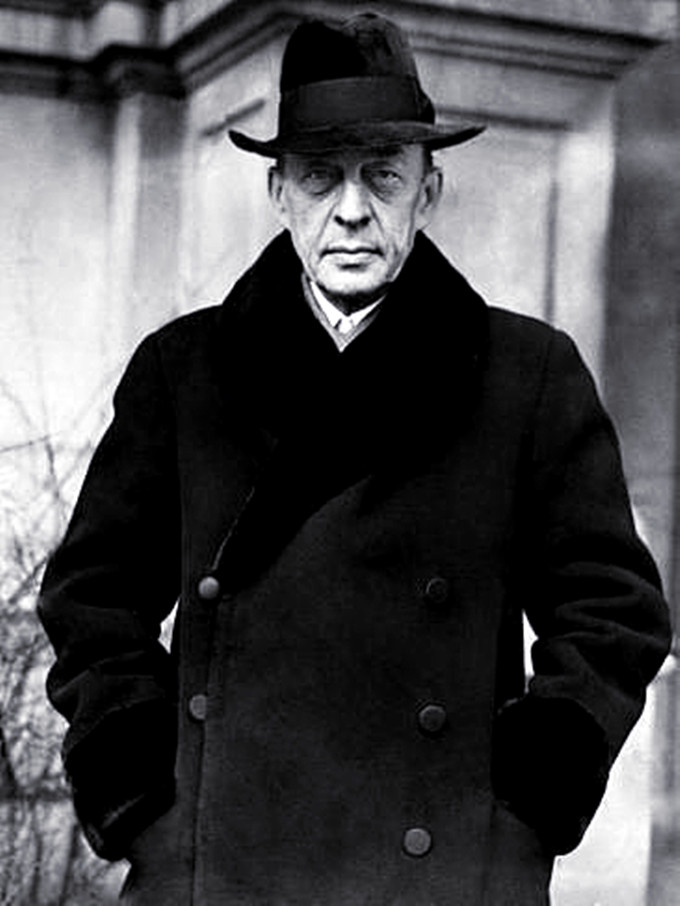 |
|
| |
谢尔盖·拉赫玛尼诺夫(Sergei Rachmaninof) |
|
|
|
| |
拉赫玛尼诺夫后期创作及风格 |
|
|
|
| |
1909年春,拉赫玛尼诺夫回到莫斯科。在此之后一段时期,他又陆续写出《第三钢琴协奏曲》、《钢琴前奏曲集》和其他一些钢琴作品。作作为交响音乐会的指挥,他当时时也被誉为柴科夫斯基的《第四交响曲》、《第五交响曲》和鲍罗丁的《勇士》交响曲的最好的诠释者。
1917年,当俄国爆发二月革命时,拉赫玛尼诺夫持着同情的态度,他把自己的一次音乐会收入捐献给军队。然后他便离开祖国,先到瑞典,后定居美国,在那里度过他一生中最后25年的生活。在背井离乡的时期,他只是忙于几近狂热的音乐会演奏活动,一在创作方面却经历着一场危机,很长时间没有写过一部作品。只是到20年代后期,才断续地写出他的《第四钢琴协奏曲》、《科列里主题钢琴变奏曲》、《帕格尼尼主题狂想曲》、《第三交响曲》和《交响舞曲》。拉赫玛尼诺夫曾特别强调指出,他的所有后期作品都以各种不同的形式,采用中世纪天主教的歌调《愤怒的日子》,这个歌调在十九、二十世纪许多作曲家手中常常用来作为死亡的严厉和神秘的象征,拉赫玛尼诺夫同样也用来体现一种命定的结局的思想。
拉赫玛尼诺夫力图在音乐中表现一个忠实诚挚的普通人的思想感情,竭力探求让所有的人都易于理解的方式。所不同者,拉赫玛尼诺夫作品的内容更加狭窄,往往局限于抒发个人内在的精神体验,但表现得十分动人而富有诗意。他的音乐除了着重体现悲剧的因素之外,有时也以磅礴的力量讴歌幸福、赞颂祖国大自然风貌,精心刻画出一些令人心旷神怡的安谧、宁静的形象。拉赫玛尼诺夫的音乐充满了美妙的旋律,在他的同时代人当中,他是一位天才的旋律作家;他的旋律写作同俄罗斯民歌中的悠缓歌曲保持着密切的联系。他的作品还以和声语言和复调手法之丰富见长。
|
|
|
|
| |
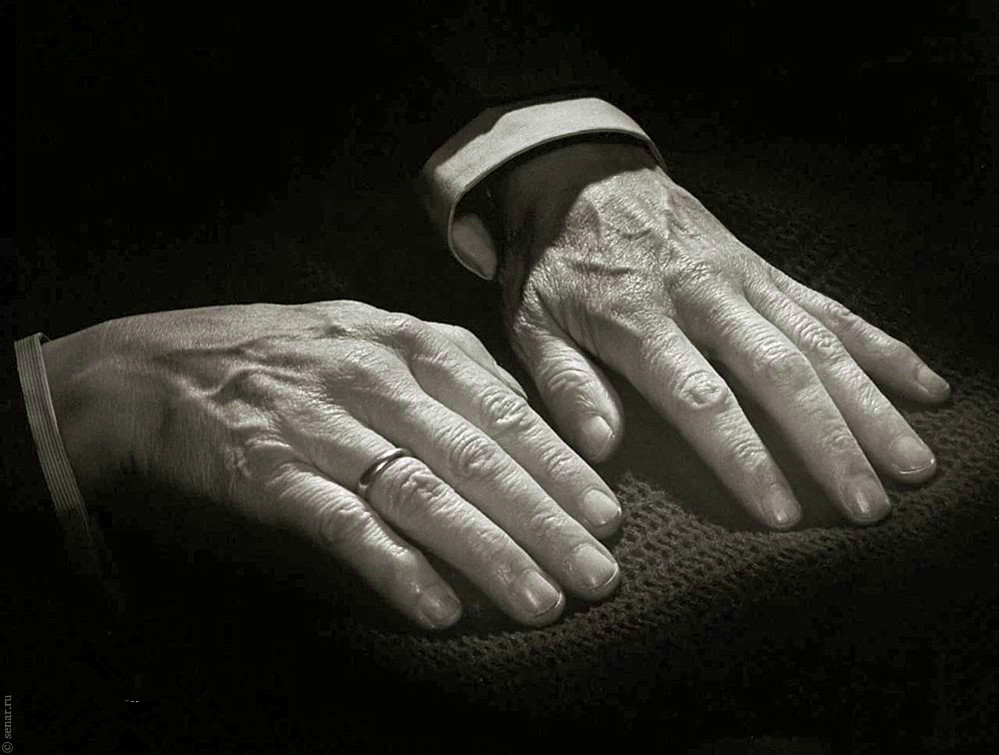 |
|
| |
据说拉赫曼尼诺夫的(Rachmaninoff)的手巨大无比,可以轻松弹奏12度。 |
|
|
|
| |
Rachmaninoff's hands are said
to be so large that they could easily play 12 degrees. |
|
|
|
| |
Rachmaninoff's
late creation and style
Rachmaninoff returned to Moscow in the spring of 1909.After that, he
successively wrote piano Concerto No. 3, Piano Prelude and other piano
works.As the conductor of symphonic concerts, he was also regarded as
the best interpreter of Tchaikovsky's Symphony No. 4, Symphony No. 5 and
Borodin's Symphony No. 4.
In 1917, when the February revolution broke out in Russia, Rachmaninoff
was sympathetic, donating one of his concert receipts to the army.He
then left his country, first to Sweden, and then to the United States,
where he spent the last twenty-five years of his life.In his time away
from home, he was engaged in almost frenzied concert activities, but he
went through a creative crisis and did not write a work for a long
time.It was only in the late 1920s that he wrote his "Piano Concerto No.
4", "Variations on a Coleri theme", "Rhapsody on a Paganini theme",
"Symphony No. 3" and "Symphonic Dance" intermittently.Rachmaninoff was
particularly stressed that all of his later works are in various forms,
the medieval Catholic tunes the day of wrath, the tunes in the hands of
many a composer in the 19th and 20th centuries are often used as a
symbol of the severity and mysterious death, rachmaninoff is also used
to reflect the thought of a destined end.
Rachmaninoff tried to express in his music the thoughts and feelings of
a faithful and sincere ordinary man, trying to find a way to make them
accessible to all.Rachmaninoff's works are more narrow in content, often
limited to expressing personal inner spiritual experience, but the
expression is very moving and poetic.His music not only focuses on the
tragic factor, but also sometimes eulogizes happiness and praises the
scenery of the motherland with majestic power, elaborately depicts some
soothing and tranquil images.Rachmaninoff's music was full of beautiful
melodies, and among his contemporaries, he was a gifted melody
writer;His melodic writing is closely related to the leisurely songs of
Russian folk songs.His works are also rich in harmonic language and
polyphony. |
|
|
|
| |
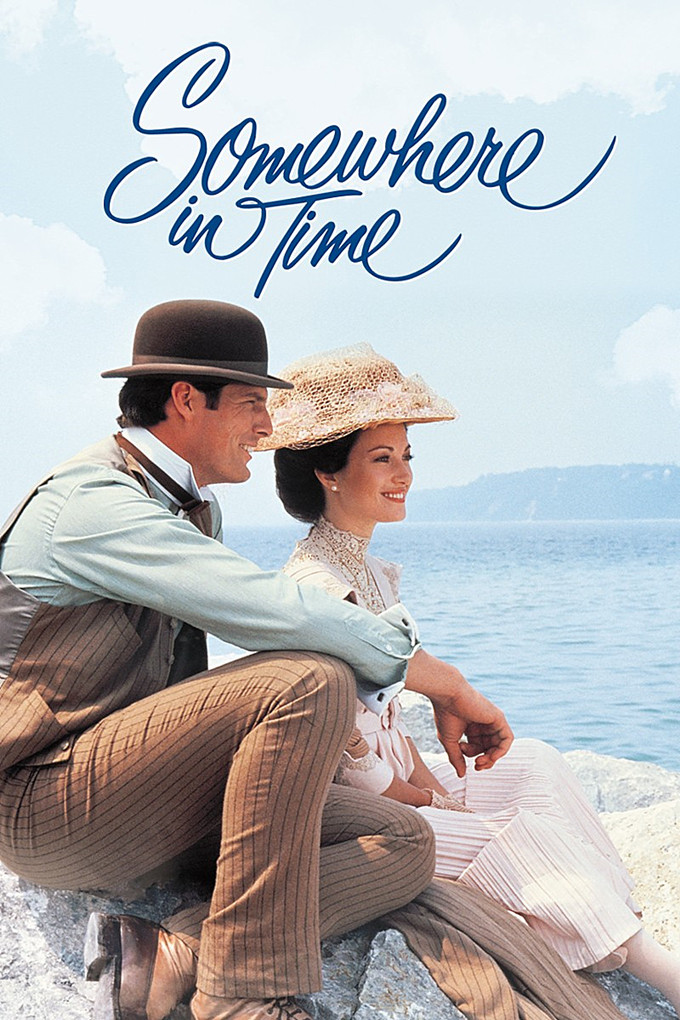 |
|
| |
电影《时光倒流七十年》(Somewhere in
Time)广告图片 |
|
|
|
| |
Advertisement for 'Somewhere
in Time' |
|
|
|
| |
拉赫曼尼诺夫的《帕格尼尼主题狂想曲》是他晚年所作,甚至被人们称之为他的第五首钢琴协奏曲,其中第18首变奏更是由于在电影《时光倒流七十年》中,成为电影配乐,让这部乐曲名扬海外。它的构思十分奇妙,它是把帕格尼尼的主题反过来用,形成了一个新的旋律。作为伟大的钢琴家拉赫曼尼诺夫还是巨人症,据说他长的又两米高,他的手巨大无比,可以轻松跨12度,他作品的和弦都是他自己演奏,别人演奏往往都把和弦拆开演奏,因为别人没有他那么大的手。他写出了世界上最难最难的钢琴曲,包括他的第三钢琴协奏曲和第四钢琴协奏曲,由于乐曲相当难演奏,当时俄罗斯除了他的好朋友霍洛维茨能演奏,其它没人能演奏。 |
|
|
|
| |
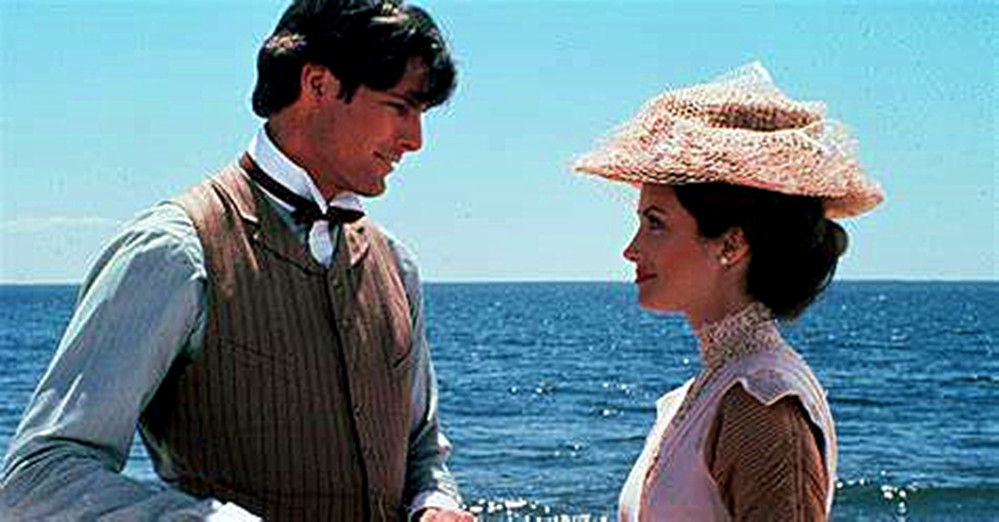 |
|
| |
电影《时光倒流七十年》(Somewhere in
Time)电影剧照 |
|
|
|
| |
Rachmaninoff's
Paganini Theme Rhapsody was written in his late years and is even called
his fifth piano concerto. The 18th variation was made famous by the film
back in Time 70 years as the soundtrack.It's a wonderful idea, it's a
reversal of paganini's theme, a new melody.As a great pianist,
Rachmaninoff was still suffering from gigantism. It is said that he was
two meters tall, and his hands were so huge that he could easily cross
12 degrees. The chords in his works were played by himself.He wrote some
of the most difficult piano music in the world, including his third and
fourth piano concertos, which were so difficult that no one in Russia
could play them except his good friend Horowitz. |
|
|
|
| |
|
|
|
|
| |
Today in the
history of music
On July 3, 1934, at the age of 61, Rachmaninoff came to Lucerne Lake to
recuperate after A small operation and began to plan A rhapsody based on
A theme from Paganini's "24 Rhapsody in A Minor".Schumann and Brahms
have done this before.Rachmaninoff worked from morning till dusk every
day for six weeks to complete the concerto.
Paganini Rhapsody on a Theme (Rhapsody on a Theme of Paganini), piano
and orchestra of the single movement concerto, the author is lage mani,
this is also one of its most important creations, painted in 1934, based
on the work of Paganini 24 violin caprice, use one of the first 24
caprices music Theme and creation, the whole works with the skill of
brilliant composer's personal style, but works in the most unforgettable
is not dazzling skills, but:
In the 18th variation, the whole work is suddenly slowed down, producing
a simple lyrical melody, beautiful and heart-warming, with the
implication of the everlasting "Russian melancholy". This melody is
first sung on the piano, simple and peaceful, gradually growing
enthusiasm, developed into an anthem of romantic passion.
This Paganini theme Rhapsody written by Rachmaninoff can also be called
"Paganini theme variation". The music is based on Paganini's 24th violin
melody, which develops 24 variations on a musical theme and develops
into a magnificent large-scale work.The 24 variations are divided into
three groups, much like the three movements of a concerto played
continuously, and the solo piano performs a showy competition with the
orchestra, which is also consistent with the concerto.But from the point
of view of the passion and the difficult technique of the music, it
should be understood as rhapsody according to the composer's own title.
According to the notes on the score of the Paganini theme Rhapsody,
Rachmaninoff composed the song at Villa Seine on Lake Lucerne in
Switzerland from July 3 to August 18, 1934.It premiered on November 7 in
Baltimore, Maryland, USA. It was conducted by Leopold Stokowski, played
by Rachmaninoff on piano and accompanied by the Philadelphia Orchestra.
Video of the day: 1.Daniel Halitonov plays Rakhmaninov's Rhapsody on a
Theme of Paganini, op. 43;2.The theme song of Somewhere in Time--
Paganini theme rhapsody. |
|
|
|
| |
|
|
|
|
| |
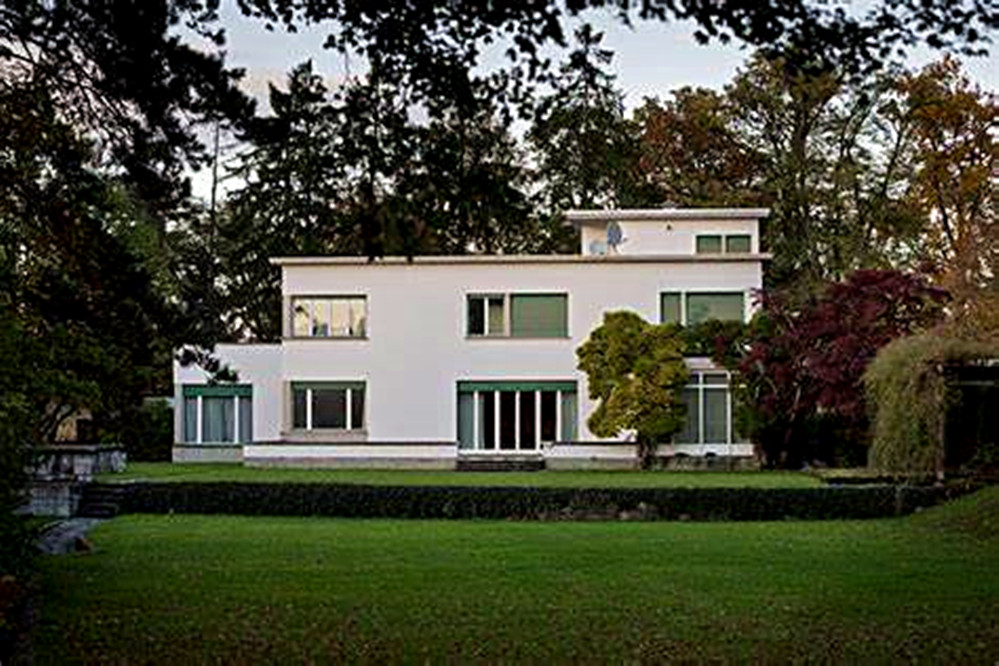 |
|
拉赫玛尼诺夫(Sergei Rachmaninof)瑞士琉森湖边塞纳别墅 |
|
|
|
|
| |
拉赫曼尼诺夫的塞纳别墅
位于瑞士威吉斯社区赫腾斯坦的拉赫马尼诺夫别墅,在1932年到1939年的夏季是俄罗斯作曲家、钢琴家和指挥家谢尔盖·拉赫马尼诺夫的住所。他自己把自己位于琉森的塞纳湖(Lake
Lucerne Senar)湖畔的庄园称为塞纳湖(Lake Lucerne Senar),塞纳湖是谢尔盖·拉赫曼尼诺夫(Sergei
Rachmaninoff)和纳塔莉亚(Natalia)的首字母缩略词。
历史
拉赫马尼诺夫于1930年在赫滕斯坦的领土顶峰获得了这一财产,并让他拆除了一座现有的建筑。
随着别墅的建造,以及建筑和船屋,他委托建筑师卡尔·弗里德里希·阿尔弗雷德·莫里和坎瑟。
当时的艺术建筑在风格上的新风格,一种流动的包豪斯风格,是在1931-1933年创造的。
对于大型公园设计而言,重要的景观美化和湖附近的挡土墙建设是必要的。汽艇“拉赫玛尼诺夫号”被安置在船坞里,用它他可以在大约15分钟内到达卢塞恩。对于居民的高档生活方式,Senars还包括有司机的专属汽车。
在琉森湖期间,包括他后来的两个作品:《帕格尼尼主题狂想曲》,Op 43,和《第三交响曲》,Op 44
1939年结束了在瑞士拉赫玛尼诺夫的最后一次访问,就在第二次世界大战爆发之前。他回到了美国1943年,他在那里去世。但塞纳尔仍然是家族所有,拉赫曼尼诺夫的小女儿塔蒂亚娜(Tatiana)和2012年去世的儿子亚历山大(Alexander)在这里居住了几十年。
别墅和外屋几乎仍保持原样。原来的内部大部分仍然保存完好。工作室自1934年起就摆放在大钢琴上,这架拉赫曼尼诺夫是施坦威父子公司捐赠的。档案中有500多张照片,250本来自拉赫曼尼诺夫图书馆的书籍和几百封原始信件。衣服和其他个人物品也包括在内。
该被列入名录的建筑现在是Serge
Rachmaninoff基金会的所在地,并且只在可获得的活动背景下对游客开放。2013年秋,俄罗斯政府宣布寻求购买这处房产。 |
|
|
|
| |
 |
|
| |
瑞士琉森湖畔的旖旎风光 |
|
|
|
| |
Villa Senar
The villa Rachmaninov or Senar in Hertenstein in the community Weggis in
Switzerland was in the summer months of the years 1932 to 1939 the
residence of the Russian composer, pianist and conductor Sergei
Rachmaninoff. He himself called his estate on the shores of Lake Lucerne
Senar, an acronym consisting of the name of Sergei Rachmaninoff and
Natalia.
History
Rachmaninov acquired the property in 1930 in the territory pinnacle in
Hertenstein and let demolish an existing building. With the construction
of the villa together with outbuildings and boat house he commissioned
the architect Karl Friedrich Alfred Möri and cancer. The then state of
the art building in the style of the new style, a flow of the Bauhaus
style, were created in the years 1931-1933.
For the large park design significant landscaping and construction of a
retaining wall near the lake were necessary. The boathouse the motorboat
Rachmaninov was housed, with which he could reach Lucerne in about 15
minutes. For upscale lifestyle of the residents Senars also included
exclusive cars with driver. |
|
|
|
| |
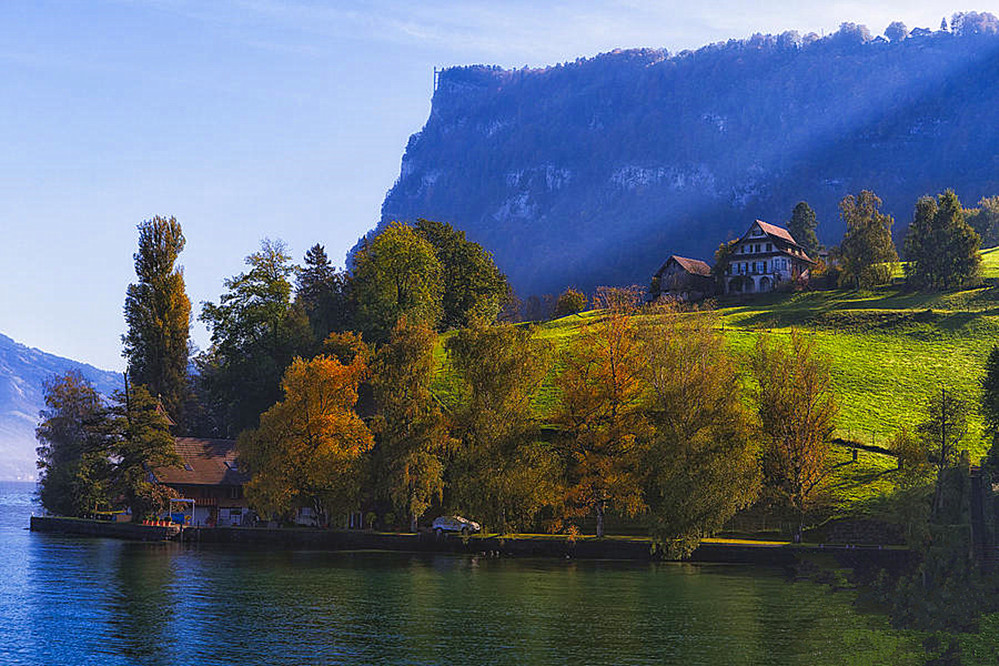 |
|
| |
瑞士琉森湖畔的旖旎风光 |
|
|
|
| |
During the time at
Lake Lucerne, including two of his later works were: The Rhapsody on a
Theme of Paganini, Op 43, and the Symphony No. 3, Op 44
1939 ended last visit Rachmaninov in Switzerland just before the
outbreak of the Second World War. He returned to the U.S., where he died
in 1943. Senar but remained family owned and has been inhabited over the
course of decades by Rachmaninov's younger daughter Tatiana and her son
Alexander, who died in 2012.
The villa and the outbuilding are still almost in its original state.
The original interior is still largely preserved. In the studio since
1934 is on the grand piano, the Rachmaninoff was donated by Steinway &
Sons. The archive contains over 500 photographs, 250 books from
Rachmaninov's library and several hundred original letters. Clothing and
other personal items round out the collection.
The listed building is now home to the Serge Rachmaninoff Foundation
and to visitors only in the context of events available. In the autumn
of 2013 it was announced that the Russian state sought to purchase the
property. |
|
|
|
| |
|
|
|
|
| |
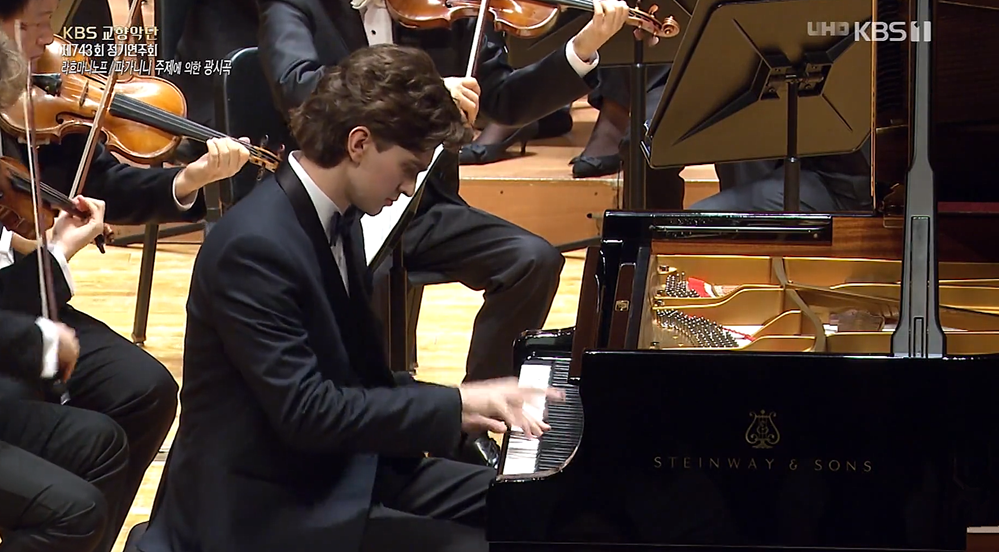 |
|
| |
丹尼尔·哈利托诺夫(Daniel
Kharitonov ) |
|
|
|
| |
丹尼尔·哈利托诺夫(Daniel
Kharitonov )出生于玉兹诺-萨哈林斯克Yuzhno-Sakhalinsk。 他在莫斯科音乐学院中央音乐学院学习。
目前他是瓦列里·皮亚斯茨基的学生。 六岁时,他获得了新名字慈善基金会的奖学金。
在2010年,他赢得了第十一届国际胡桃夹子电视比赛的青年音乐家。
在2015年4月,他参加了第一届弗拉基米尔·克林夫莫斯科国际钢琴比赛的大奖赛。
从12岁起,他就经常和莫斯科维尔托西室内乐团一起演出。 他获得弗拉基米尔·斯皮瓦科夫慈善基金会的奖学金。
他曾与俄罗斯最好的管弦乐团一起出现过,其中包括Marinsky剧院交响乐团、柴可夫斯基大型交响乐团和鞑靼斯坦国家交响乐团。
2013年,他在纽约卡内基音乐厅演出。 |
|
|
|
| |
 |
|
| |
丹尼尔·哈利托诺夫(Daniel
Kharitonov )在大师课上 |
|
|
|
| |
Born in
Yuzhno-Sakhalinsk. He studies at the Central Music School of the
Moscow Conservatory. At present he is a pupil of Valery
Piasetsky. At the age of six he received a scholarship from the
New Names Charitable Foundation. In 2010 he won the 11th
International Nutcracker Television Competition for Young
Musicians. In April 2015 he took the Grand Prix at the 1st
Vladimir Krainev Moscow International Piano Competition. Since
the age of 12 he has regularly performed with the Moscow
Virtuosi Chamber Orchestra. He holds a scholarship from the
Vladimir Spivakov Charitable Foundation. He has appeared with
the best Russian orchestras, among them the Mariinsky Theatre
Symphony Orchestra, the Tchaikovsky Large Symphony Orchestra,
and the Tatarstan National Symphony Orchestra. In 2013 he
performed in Carnegie Hall in New York. |
|
|
|
| |
|
|
|
|
| |
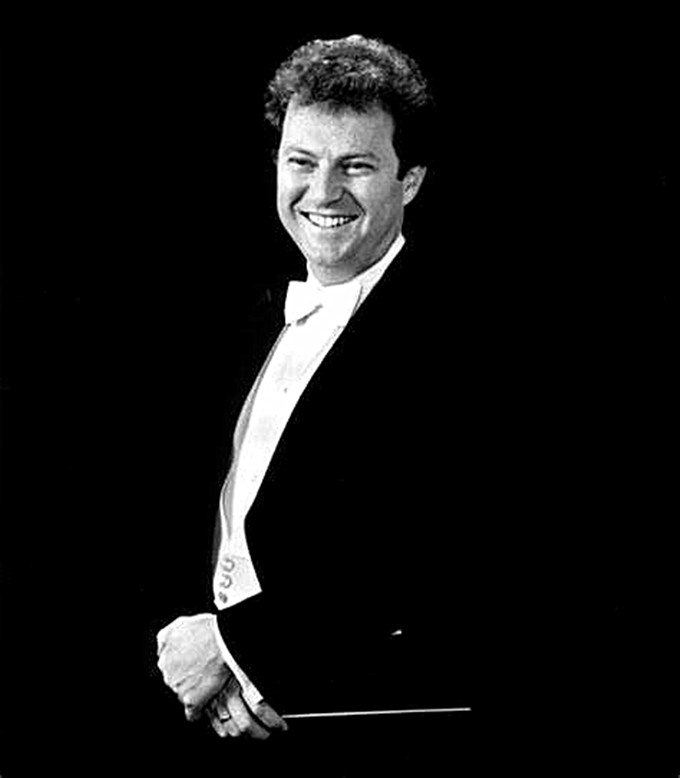 |
|
|
|
| |
尤尔·莱维(Yoel Levi) |
|
|
|
| |
以色列音乐家尤尔·莱维(Yoel
Levi)是以色列音乐家和指挥家。出生:1950年8月16日(69岁)·萨图·梅尔,罗马尼亚电视节目:如歌的明天·亚特兰大交响乐团金婚纪念日(1995)唱片:《第三交响曲》《剧院音乐》(2002年)《悲剧》(1998)《行星》(1998)《序曲》(1997)《小提琴协奏曲,op.
14》/《钢琴协奏曲,op.
38》(1997)《哈利·亚诺斯组曲/《金兰塔舞曲》/《孔雀变奏曲》(1996)《柴可夫斯基:第一号钢琴协奏曲》1
/圣桑斯:第一号钢琴协奏曲·第五交响曲(波兰儿童:Eyal Levi (Son),亚特兰大交响乐团成员 |
|
|
|
| |
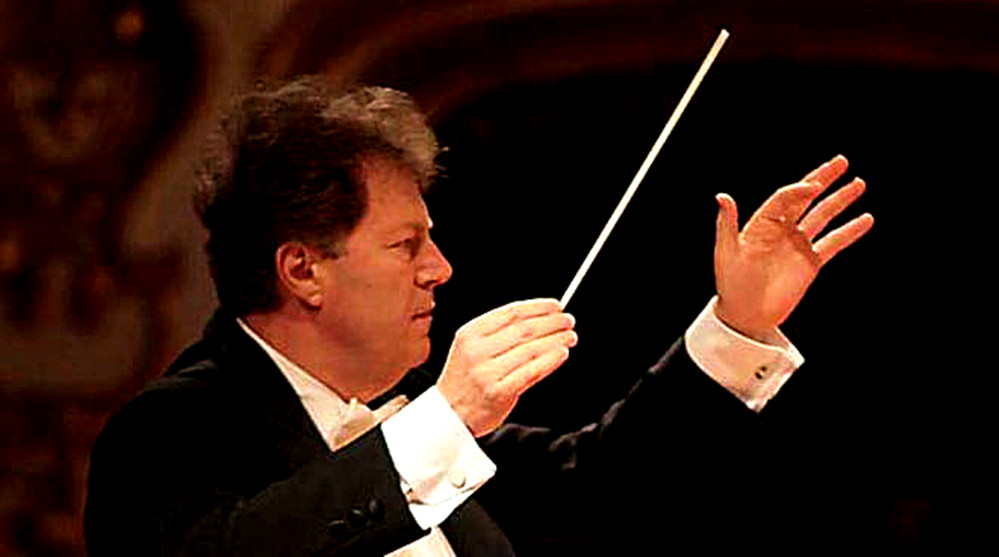 |
|
| |
尤尔·莱维(Yoel Levi) |
|
|
|
| |
Yoel
Levi
Israeli Musician
Yoel Levi is an Israeli musician and conductor.
Born: Aug 16, 1950 (age 69) · Satu Mare, Romania
TV shows: Cantabile Tomorrow · Atlanta Symphony Golden
Anniversary (1995)
Albums: Third Symphony & Music for the Theatre (2002) · Symphony
no. 6 "Tragic" (1998) · The Planets (1998) · Overtures (1997) ·
Violin Concerto, op. 14 / Piano Concerto, op. 38 (1997) · Háry
János Suite / Dances of Galánta / Peacock Variations (1996) ·
Tchaikovsky: Piano Concerto no. 1 / Saint-Saëns: Piano Concerto
no. 2 (1995) · Symphony No. 5 (Polish Natio…
Children: Eyal Levi (Son)
Member of: Atlanta Symphony Orchestra |
|
|
|
| |
|
|
|
|
| |
|
|
|
|
| |
时光倒流七十年主题曲——帕格尼尼主题狂想曲 |
|
|
|
| |
Go back in time 70
years theme song - Paganini theme rhapsody |
|
|
|
| |
未得原作者编者授权严禁转载www.mt77.com任何内容 |
|
|
|
.png)

